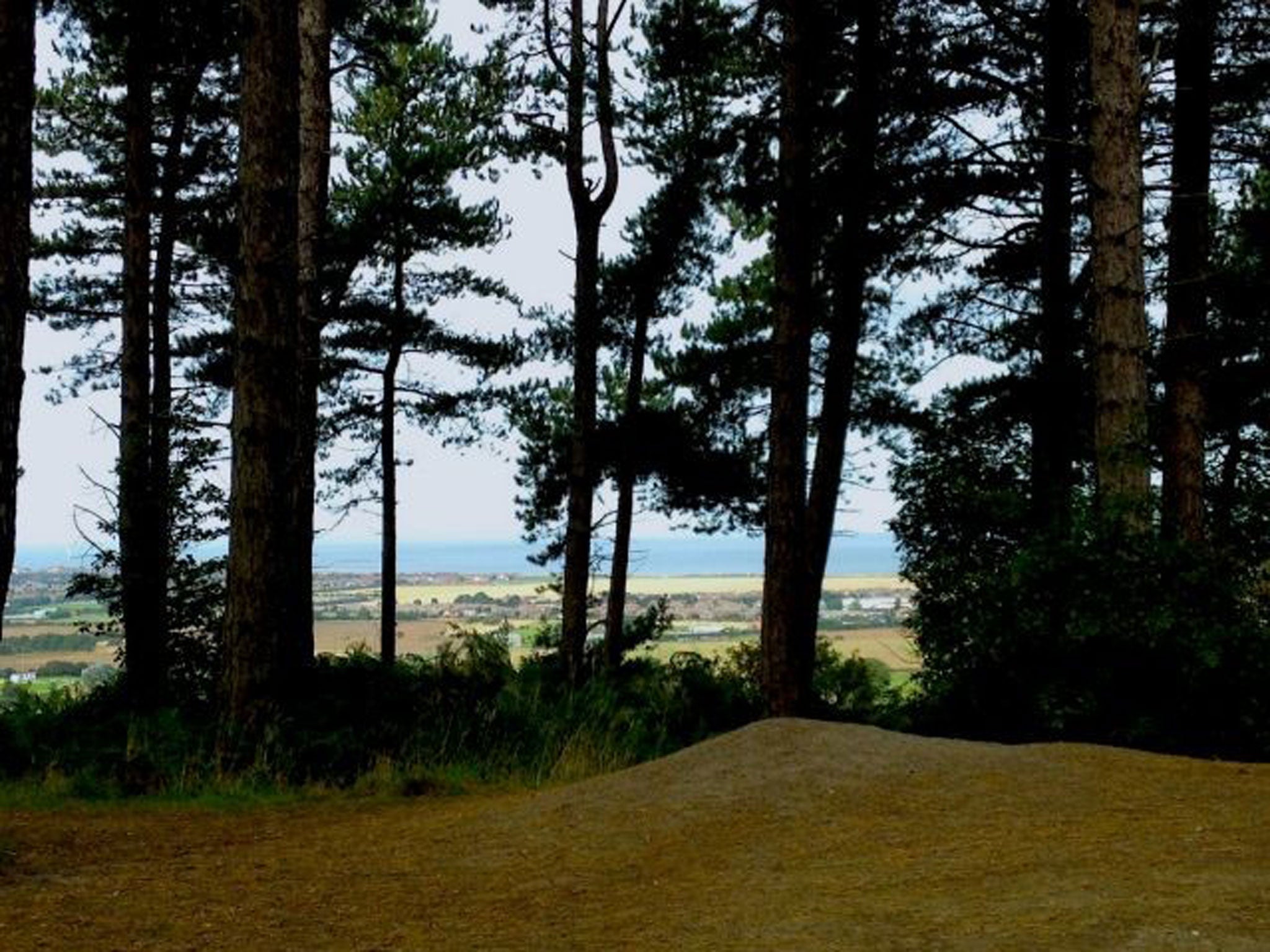Even before you've consulted the car park signs, you just know this hump-backed wood heaves with history. There's something about its location that speaks of ancient concerns: positioning, clear lines of vision, the importance of higher ground. Then, as my wife dons a pack and I lift my son on to my shoulders, we pass information boards that confirm it. Stone Age man quarried here; by the Bronze Age, it had been re-imagined as a resting spot for chieftains. One look around and you understand why.
Errington Wood lies like a sleeping beast in flat land; it is an escarpment overlooking lush, sweeping wheatfields to the south-west that eventually roll up to the ragged ridgeline of moor. In the other direction is an uninterrupted view of Tees Bay and, beyond, the endless blue belt of the North Sea. The wood's highest point offers a 360-degree perspective that would be the historical equivalent of radar; it would be impossible to approach undetected.
Leaving the car park, we follow a wide track heading eastwards, the wood beside us rising like a great burial mound, bristling like an unkempt chin with self-seeded deciduous trees, hazels and sycamores. Children's voices ring out as they prospect these leafy gullies, interspersed with the flinty "chip" of a greater spotted woodpecker.
In more recent years this wood became riddled with bell pits and the world's largest ironstone mine. When the mines closed, it was the out-of-work miners who planted trees on the spoil heaps, beginning the wood we're walking in today. Now work is under way to supplement the larch, pine and spruce with the trees that would have stood here when the chieftains were lowered into this earth: oak, ash, birch and beech.
Later, as we head to Saltburn for dinner, I look up at the wood from the road and see its dark-green silhouette rising from the landscape. Sometimes the myriad layers that constitute this country are hidden; other times, like in Errington Wood, they are wonderfully and inescapably close.
*
Errington Wood is above the village of New Marske, three miles from Saltburn-by-the-Sea, North Yorkshire. There's a half-hourly rail service (Mondays to Saturdays) from Middlesbrough and Darlington to Saltburn station via Northern Rail (0844 241 3454; northernrail.org).
Stay at the delightfully cosy Victorian Guesthouse (01287 625237; saltburn-accommodation.co.uk) in Saltburn, from £65 per night with breakfast. Dine at the hearty King's Grill (thekingsgrill.co.uk) for the likes of scallops and black pudding, followed by a mighty steak and chips.

Join our commenting forum
Join thought-provoking conversations, follow other Independent readers and see their replies
Comments